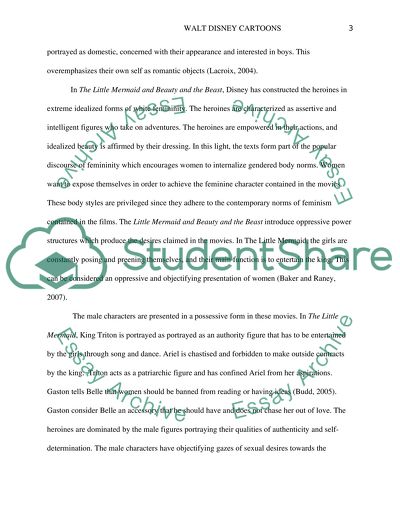Cite this document
(“Walt Disney Cartoons Essay Example | Topics and Well Written Essays - 2000 words”, n.d.)
Walt Disney Cartoons Essay Example | Topics and Well Written Essays - 2000 words. Retrieved from https://studentshare.org/visual-arts-film-studies/1606451-disney-cartoons-are-full-of-racist-sexist-homophobic-representations-discuss
Walt Disney Cartoons Essay Example | Topics and Well Written Essays - 2000 words. Retrieved from https://studentshare.org/visual-arts-film-studies/1606451-disney-cartoons-are-full-of-racist-sexist-homophobic-representations-discuss
(Walt Disney Cartoons Essay Example | Topics and Well Written Essays - 2000 Words)
Walt Disney Cartoons Essay Example | Topics and Well Written Essays - 2000 Words. https://studentshare.org/visual-arts-film-studies/1606451-disney-cartoons-are-full-of-racist-sexist-homophobic-representations-discuss.
Walt Disney Cartoons Essay Example | Topics and Well Written Essays - 2000 Words. https://studentshare.org/visual-arts-film-studies/1606451-disney-cartoons-are-full-of-racist-sexist-homophobic-representations-discuss.
“Walt Disney Cartoons Essay Example | Topics and Well Written Essays - 2000 Words”, n.d. https://studentshare.org/visual-arts-film-studies/1606451-disney-cartoons-are-full-of-racist-sexist-homophobic-representations-discuss.


